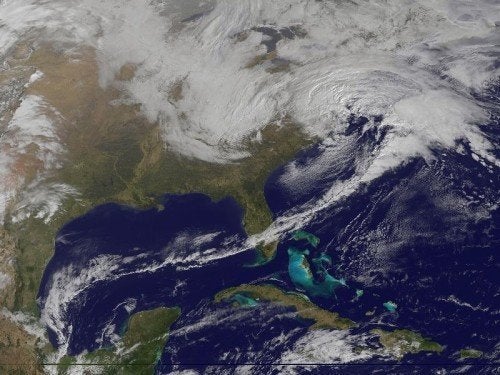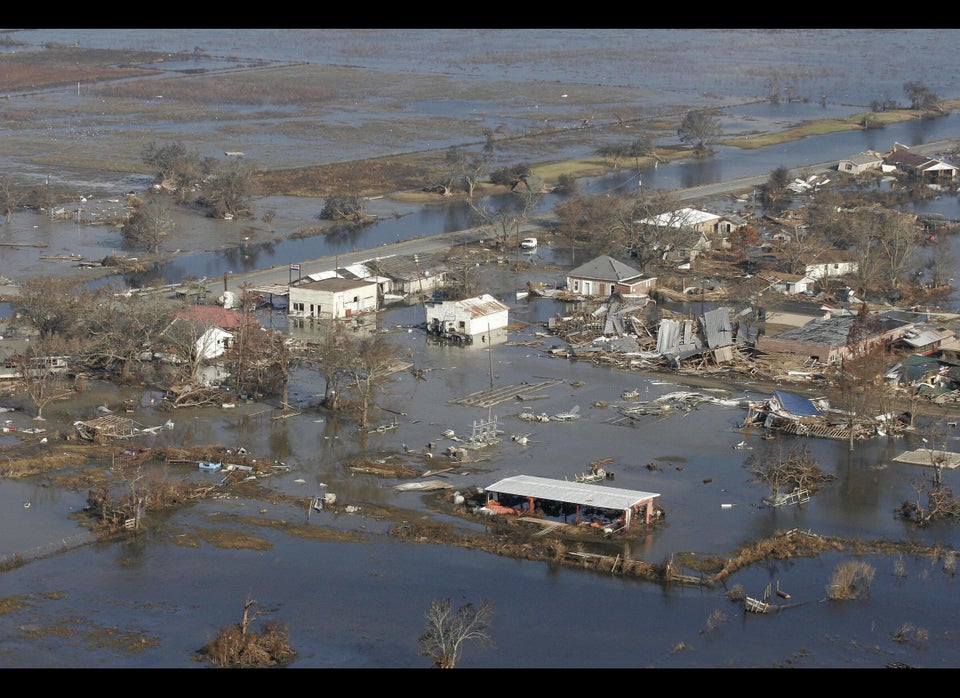
Key weather and climate satellites would get a boost under a new Senate spending proposal.
The $984 billion measure, which Senate Appropriations Committee leaders introduced late Monday, would fund the federal government from March 27 until Sept. 30, the end of the current fiscal year.
The bill would increase the National Oceanic and Atmospheric Administration’s (NOAA) budget for satellite procurement to $1.814 billion, $117 million more than the agency received last year. NOAA’s overall budget would rise to $5.1 billion, up from $4.9 billion last year.
The Senate, which will begin debating the measure Tuesday, is expected to approve it.
The bill’s swift passage could help allay fears that the pervasive pressure to reduce federal spending will hamper NOAA’s efforts to develop its next generation of weather and climate satellites. In February, the agency warned that automatic, across-the-board spending cuts that took effect this month could delay the launches of two geostationary weather satellites by 2-3 years, diminishing the quality of NOAA’s weather forecasts and warnings.
The House has already responded to such arguments. It passed its own spending bill last week that includes increased funding for NOAA’s geostationary satellite program, known as GOES-R, in line with the more general increase for agency satellites included in the Senate package.
But that doesn’t mean that lawmakers are happy about handing over the cash.
Senate Appropriations Committee Chairwoman Barbara Mikulski (D-Md.), a longtime NOAA champion on Capitol Hill, has also been one of the harshest critics of the agency’s management of its satellite programs. Last year, as chairwoman of the Senate spending subcommittee that oversees NOAA, she proposed moving the agency’s satellite division to NASA, citing “fussbudgeting and mis-budgeting” — and a fear that NOAA’s growing satellite bill would put the squeeze on the agency’s other weather, fisheries and climate programs.
Those concerns linger, judging by the sometimes harsh language in the new Senate spending package Mikulski authored with the Senate Appropriations Committee’s ranking Republican, Richard Shelby of Alabama.
“The value of NOAA’s weather satellite programs cannot be overstated in terms of the data collected that is used to develop daily weather forecasts and provide citizens with ample warning about severe weather,” the Senate plan says. “Unfortunately, certain NOAA satellite acquisition programs, particularly the Joint Polar Satellite System (JPSS), remain mired in cost overruns, missed deadlines, dysfunctional oversight, and lack of transparency in budgeting and planning.”
The Mikulski-Shelby proposal would require the agency to submit reports to Congress outlining its plans to limit cost increases and schedule delays for JPSS and NOAA’s next generation of geostationary weather satellites, known as GOES-R, “to ensure that these costs do not erode other important NOAA missions.”
The report also directs the agency to consider moving development of another satellite program, the Jason-3 altimetry mission, from NOAA to NASA. Jason-3 is a joint U.S.-European Union project to monitor sea level rise.
The $1.814 billion the plan would set aside for NOAA satellite procurement is $36 million less than the White House requested for 2013 — a shortfall the Senate proposal says the agency can make up by increasing its “administrative efficiencies.”
And it remains to be seen just how big of a bite the automatic, across-the-board spending cuts called “sequestration” will take out of funding for NOAA and other federal agencies.
Any spending proposal that makes it into law would be subject to those cuts, which the Office of Management and Budget said last fall would reduce federal outlays by 8.2 percent. But since Congress voted in January for slightly smaller reductions, the figure batted around in Washington is about 5 percent.
That would reduce the $5.1 billion Mikulski proposes for NOAA to roughly $4.84 billion, slightly less than the agency received in fiscal year 2012. The House calls for an even smaller NOAA outlay, about $4.65 billion.
